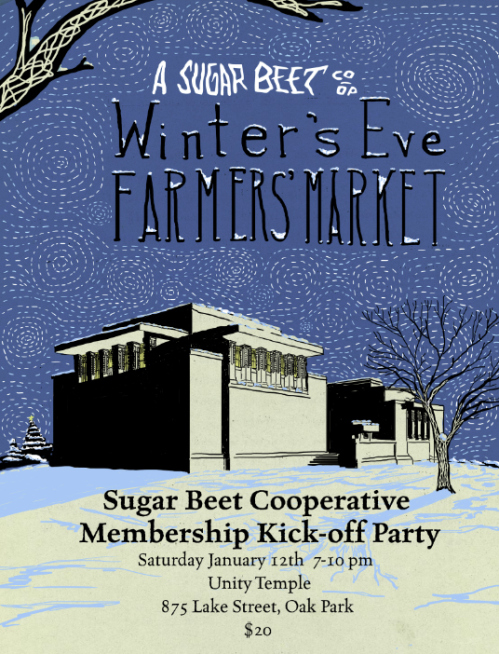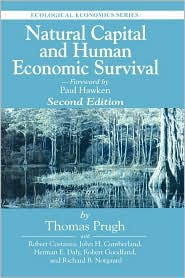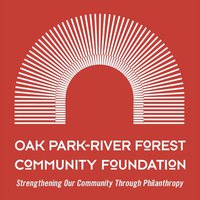Annie Leonard/2012/6.5 min
Can shopping save the world? The Story of Change urges viewers to put down their credit cards and start exercising their citizen muscles to build a more sustainable, just and fulfilling world.

Annie Leonard/2012/6.5 min
Can shopping save the world? The Story of Change urges viewers to put down their credit cards and start exercising their citizen muscles to build a more sustainable, just and fulfilling world.

The Sugar Beet Co-op Membership Kick-off Party and Winter’s Eve Market A celebration of local food, growing partnerships and a year of good work is being planned by The Sugar Beet Co-op for Saturday, January 12th at Unity Temple. Memberships to the co-op will be made available for the first time at this community gathering and hundreds of people are expected to turn out to show their support.

Just a year ago, a group of neighbors from northeast Oak Park came together and decided that the Oak Park, Austin, and surroun
ding communities needed something new: a full-service, cooperative grocery store that would provide a neighborhood source for local, sustainable, healthy foods and a way of connecting farmers and producers to their customers.
Throughout 2012, The Sugar Beet team has participated in community events, connected with farmers and supporters of the Oak Park Farmers' Market, forged relationships with local individuals, organizations, and businesses, and organized events and workshops with the goal of bringing our community together around good food.
The Sugar Beet Co-op Membership Kick-off Party will include a Winter’s Eve Market featuring vendors of local foods and goods for purchase as well as The OPRF High School Jazz Quartet. Wine and craft beers, a crepe station, seasonal foods and Sugar Beet Home Movies will make this a cozy evening of fellowship and inspiration. Tickets are $20 which includes 3 drink tickets and are available at www.sugarbeetcoop.com.

The River Forest passive house discussed in this post we published early in 2013 is featured on the upcoming Green Living and Learning Tour on Sept. 28th. Read more about it in this article, and plan to stop there on the Tour! Oak Park architect Tom Bassett-Dilley has designed the first certified passive house to be built in the Chicago area. The new house, built for the Lema family, uses only a small fraction of the heating and cooling energy of a conventional house.
Based on an interview with Tom Bassett-Dilley conducted by Doug Burke
As the 28th certified passive house in the United States the River Forest home represents a small but growing movement. Bassett-Dilley, who heads the Passive House Alliance in Chicago, predicts that there will be 200 or more in the country by the end of this year. There are many more passive houses in Europe.
What is a Passive House?

The name “passive” means that these houses use the environment around them as much as possible – for instance, by having lots of south-facing windows to take in the sun's heat in the winter, but with overhangs to shade those same windows in the hot summer. Smart design reduces the amount of the work the home has to do to maintain comfort. And a very tight building envelope means it doesn't take nearly as much energy to heat or cool the house. A house built to the new Illinois code (just revised effective this month) is required to have no more than 5 air changes per hour. A passive house must have no more than 0.6. The River Forest house tests out at just 0.38 air exchanges per hour – far tighter than required by either standard.
There still has to be ventilation; a mechanical system draws out moist air from kitchen, bathrooms, and laundry, and feeds in air to the living areas. Very good efficient heat exchangers retain 85% of the heat.
This produces a very comfortable and simple house, which use about 75% less energy than built-to-code homes to heat and cool. Over a 30-year mortgage, the heating and cooling savings should at least make up for the slightly higher cost of construction -- about 10% higher, with 18-inch thick walls, thick insulation even under the building, and tight sealing everywhere. Even with today's exceptionally low natural gas costs, a passive house should still be less expensive to own and operate than a conventional one. And it is much better for the environment, using only a small amount of electricity in heat pumps for heating and cooling. There is no need for a gas-burning furnace, nor any air-conditioning system except the heat pumps.
Learn more about this house, including the non-toxic and recycled materials used in building it, how it is laid out, and how it fits into the neighborhood, at Sustainable Chicago. See also the article titled "The Heat is On - River Forest Home to be area's first certified passive house," in the January 2, 2013, edition of the Wednesday Journal, p. 35.
 Please join us in January to discuss the book, Natural Capital and Human Economic Survival By Thomas Prugh. This book includes contributions from the founders of ecological economic theory, how it differs fundamentally from the current “classical” theory, plus entropy, throughput, sustainability. How to define and value natural capital. Economic strategies for restoring our degraded natural capital.
The study will be held Tuesday, January 22, 7-9 p.m at the home of Jim Babcock, 927 S. Kenilworth, Oak Park.
Please join us in January to discuss the book, Natural Capital and Human Economic Survival By Thomas Prugh. This book includes contributions from the founders of ecological economic theory, how it differs fundamentally from the current “classical” theory, plus entropy, throughput, sustainability. How to define and value natural capital. Economic strategies for restoring our degraded natural capital.
The study will be held Tuesday, January 22, 7-9 p.m at the home of Jim Babcock, 927 S. Kenilworth, Oak Park.
To RSVP and for more information call: Jim Babcock—630-740-0638 or Doug Burke—708-533-2316.
 The Oak Park River Forest Community Foundation hosted a "Thanksgiving in October Celebration of Giving and Grants Presentation on Thursday, October 25th. Among many other grants, five organizations were awarded grants through the COMMUNITYWORKS initiative for environmental sustainability.
The five organizations and their projects that received environmental sustainability grants in this round of funding are as follows:
The Oak Park River Forest Community Foundation hosted a "Thanksgiving in October Celebration of Giving and Grants Presentation on Thursday, October 25th. Among many other grants, five organizations were awarded grants through the COMMUNITYWORKS initiative for environmental sustainability.
The five organizations and their projects that received environmental sustainability grants in this round of funding are as follows:
District 97 Irving School Garden Project: Grant to expand the garden to provide students, families and the community with access to and knowledge about healthy foods and sustainability.
Green Community Connections: Grant to support the Energy, Waste and Water Campaign, a 12-month campaign to educate, motivate and support OPRF residents to make measurable changes in areas of 1) residential energy efficiencies and alternative energies, 2) indoor and outdoor water management and conservation, and 3) household waste reduction through reducing, reusing and recycling.
Oak Park Development Corporation: For the Green Business Project which identifies and suppports local businesses implementing and measuring environmentally sustainable improvements in commercial buildings and business operations aligned with PlanItGreen goals (energy, water, & waste outcomes) while being mindful of business's financial "bottom line."
Triton College: For BizItGreen designed to deliver training to OPRF businesses on how to achieve Green Business Certification and to provide technical assistance and consultative support to OPRF businesses that elect to engage in the process available through the Illinois Green Business Association.
Village of Oak Park: For the Oak Park Residential Energy and Water Efficiency program based on energy audits, low flow toilet rebates and a shower head and faucet aereator program.
Additional information on the Oak Park River Forest Community Foundation and it's grant-making is available at the foundation's web site: http://www.oprfcommfd.org

 Submitted by Doug Burke
Energy Impact Illinois (EI2) is a program set up with stimulus money to promote home weatherization and improve energy efficiency. EI2 certifies contractors, coordinates energy assessments and provides rebates on certain home energy efficiency improvements. In my case, my wife and I own a two-flat in Logan Square that we thought was pretty inefficient. Our monthly bill from People's Gas under the budget plan has been $181. We called one of the EI2 certfied contractors, Green Energy Improvements, and they did an energy assessment at a charge of $99. They recommended improvements estimated at a cost of $6824 that would save about 25% of the gas cost. (It also saves electricity for ac in the summer, but our tenants pay that so I don't have the numbers.)
Submitted by Doug Burke
Energy Impact Illinois (EI2) is a program set up with stimulus money to promote home weatherization and improve energy efficiency. EI2 certifies contractors, coordinates energy assessments and provides rebates on certain home energy efficiency improvements. In my case, my wife and I own a two-flat in Logan Square that we thought was pretty inefficient. Our monthly bill from People's Gas under the budget plan has been $181. We called one of the EI2 certfied contractors, Green Energy Improvements, and they did an energy assessment at a charge of $99. They recommended improvements estimated at a cost of $6824 that would save about 25% of the gas cost. (It also saves electricity for ac in the summer, but our tenants pay that so I don't have the numbers.)
Here's how it worked out. Right now EI2 will provide a rebate that, combined with existing rebates – in our case, from People's Gas – will pay 70% of the job, up to a limit of 70% of $2500, or a $1750 rebate. Our job was much bigger than most; 70% of $2500 is only about 25% of the whole $6824 job – but it was still a big help. For a single-family house, the whole job might not exceed $2500, so that the homeowner would be paying only $750.
So at this point, with the $6824 total cost, we were looking at:
$6824 – 1750 – 99 (the assessment charge is credited to the job) = $4975.
Not having $4975 on hand, we opted for a loan, facilitated through EI2 and provided by Green Choice Bank. We needed to put down 10% and borrowed the other 90% in a seven-year loan. The interest rate is not that low – 8% – but yet another subsidy pays the interest for year one of the seven-year loan.
The work was done in one short session on August 23rd to construct a hatch so they could insulate between the second floor and the flat roof, and one long day on September 6th. They did a blower door test before and after the job, and now estimate that we should save about 1/3 on our gas bill. That would be $60 per month, or more than the payments during the first (subsidized) year of the loan. After that, if gas prices remain the same, the payments would be just a little bigger than the projected savings. Plus we will have happier tenants since they will save money also.
We expect to get a certificate issued through EI2 that our building is officially green. To get that, you have to get at least a 15% reduction in energy use. The Multiple Listing Service, which realtors use, now officially recognizes this certificate. How much should this add to the value of the building? Here are two different estimates.
1. Bonnie Marx at Green Energy Improvements said there was evidence that for every dollar of energy savings per year, the value of the building goes up $20. On this basis, for gas alone, the increase would be $60 x 12 x 20 = $14,400. Then add electricity to that and the total increase would probably be in the range of $20,000 or a little more.
2. A California study claimed that green houses get a premium of 9%, which would probably be more than $30,000. But then that's California – people probably pay more attention to green stuff there.
If you are interested in doing similar work, you can get the names of contractors from EI2. The whole thing flows smoothly: the rebate and the loan flow directly to the contractor, with little paperwork on our part for the subsidies, and very little for the loan. And again, if you get in while the 70% subsidy is available and your job isn't too big, you may not need any loan. My wife and I are so pleased with the work on our rental propertywe are now preparing to participate in EI2 a second time, at our house in Oak Park.
For more information about Energy Impact Illinois, or to get started, call Pamela Brookstein at 708-252-0623 or email pamela@energyimpactillinois.org.
See also related article and video: Energy Impact Illinois: "This Rebate Program Rocks!"
 Department of Energy Stimulus Funds - focused on air sealing and insulation
Department of Energy Stimulus Funds - focused on air sealing and insulationChicagoland received stimulus funds from the Department of Energy to help make homes more energy efficient and help put people to work. This initiative is focusing on energy retrofits, specifically air sealing and insulation - the most cost efficient and easy way to make a home comfortable, safe, and energy efficient (which means lower energy bills). To make this do-able and inviting for homeowners, Energy Impact Illinois is offering $99 home energy assessments (typically $500). The contractors who do these assessments have applied to be a part of this project, their work has been repeatedly checked, and they have an extra home energy performance certification.
After the assessment, the contractor gives the homeowner a menu of options detailing upgrades, their costs, and their energy savings over the year. If the homeowner goes with the air-sealing and insulation option (most cost effective, easiest way to make a home energy efficient), they become eligible for an instant rebate of 70% up to $1750. There are also low interest loans available, both secured and unsecured.
Here is the math, based on averages of work over the last year:
Average cost of work: $2500 Rebate: $1750 Cost to homeowner: $750 Yearly energy cost savings per year: $500
An added bonus to all of this: These energy efficiency upgrades can now be listed on a home's real estate MLS listing. Homeowners in California have been doing this and seeing their home value increase by 9%. If you are interested in learning more, call Pamela Brookstein ( 708-252-0623 ) or send an email.
This stimulus funding must be used by May 2013, so it became important to figure out the most efficient way to get this money out to homeowners in our communities. A group of not-for-profits, government agencies, and utility companies came together to form an alliance - Energy Impact Illinois - to do this. ( Please note that this program is also promoted by the utilities under the name Home Energy Savings Program.)
 Message from Active Transportation Alliance
Message from Active Transportation Alliance
On Sept. 18, the Oak Park Village Board will consider a proposal to redesign Madison Street into a three-lane road (two travel lanes + a left hand turn lane) with wider sidewalks and parkways, safer crosswalks, bike lanes, and streetscape improvements. Madison would become less like Harlem and North Avenues and more like two-lane roads such as Chicago and Ridgeland Avenues.
The project would create a safer, greener, more attractive and walkable street, and it would be funded in part with more than $7 million in TIF funds that are dedicated to improvements on and along Madison.
For more information about this project, read Active Trans' Q&A blog post. send an email to the Oak Park Village Board to let them know that you want a Madison St. that is safer, quieter, more attractive and a better fit for the community.
Why does Madison Street need a makeover?
 Written through a collaboration between Karen Ard, Doug Burke and Sally Stovall
Most folks in Oak Park / River Forest area understand the central importance of healthy, nutritious food which is sustainably raised, to the well-being of our bodies and the planet. Our current food system in the US is dominated by corporate agriculture (see Food and Water Watch’s “Farm Bill 101” for details on the few but powerful major players in agribusiness). Big agribusiness uses processes that are not safe for the animals, the soils or human beings. These processes include use of genetically modified seeds, chemical pesticides, petroleum-based fertilizers, antibiotics, hormones, and confined spaces for animals. The food thus produced (even before the major food companies further process it) is damaging both to our health and the environment.
Written through a collaboration between Karen Ard, Doug Burke and Sally Stovall
Most folks in Oak Park / River Forest area understand the central importance of healthy, nutritious food which is sustainably raised, to the well-being of our bodies and the planet. Our current food system in the US is dominated by corporate agriculture (see Food and Water Watch’s “Farm Bill 101” for details on the few but powerful major players in agribusiness). Big agribusiness uses processes that are not safe for the animals, the soils or human beings. These processes include use of genetically modified seeds, chemical pesticides, petroleum-based fertilizers, antibiotics, hormones, and confined spaces for animals. The food thus produced (even before the major food companies further process it) is damaging both to our health and the environment.
To achieve a diet of local, healthy food, we must currently grow or raise our own food or buy our food directly from local farmers who are committed to using sustainable or organic methods. This is a daunting task but the more we do it, the more we contribute to creating a mosaic of resources that will ultimately allow us to approach our goal of a truly local and healthy food system.
We have a lot of positive things contributing to growing a healthy, local food system for our area, including growing numbers of home and community gardens; the Oak Park Farmers’ Market and numerous CSA’s (Community Supported Agriculture) that deliver locally; FamilyFarmed.org -- a local organization that works regionally to support the production, marketing and distribution of locally grown, responsibly produced food; and now, on the horizon, we have the Sugar Beet co-op that will provide a year-round market for local healthy food, as well as education and skill training.
But where the rubber meets the road, it turns out that US government policy, reflected in the nearly trillion-dollar Farm Bill, actually works against all of our efforts and ends up contributing to the problem. If we want to change how Americans eat, and support development of local, sustainable food systems that will make our bodies and the planet healthier, we must to take back the Farm Bill and make it work for us instead of against us. Originally, the Farm Bill was designed to support small farmers. But it was long ago captured by the corporate forces of big agriculture. Big agribusiness organizations make up 20% of the farms but receive 90% of the subsidies; meanwhile small growers who produce real food crops like fruits and vegetables get little or no subsidies. These small farms (80% of farms) get 10% of the subsidies. The result is huge subsidized fields of corn and soybeans (nearly all genetically modified), which are used to feed animals or as ingredients of our many processed foods.
Every five years, Congress reviews the guidelines of the existing Farm Bill, and comes up with new ways to allocate the nearly-trillion dollar sum typically apportioned for American agriculture programs. The current Farm Bill provisions are set to expire on September 30, 2012. The US House of Representatives Agriculture Committee recently passed a revised version of the Farm Bill, which is moving us in the wrong direction. See the press release from Food and Water Watch, titled “Farm Bill Fails Farmers and Consumers” regarding the issues in this version of the farm bill.
In order to make government policies and investments support the priority of local, healthy food systems, we need to take back the Farm Bill and make it work for us instead of against us. We truly believe that this is what the majority of Americans want, so please join with the many organizations and individuals that care about our future generations, and let’s start “wildfires of common sense!” (EcoMind, Francis Moore Lappe, 2011) Please join Will Allen, Anna Lappé and Francis Moore Lappé, Michael Pollan, our own, Jim Slama, and many more chefs and food and nutrition experts, and local citizens, in calling on congress to stand with us to enact a food and farm bill that protects family farmers, and fairly serves the interests of all Americans. Click here to add your voice!
Related article from the Environmental Working Group: EWG Farm Bill Platform
811 South Blvd. ∙ Oak Park, IL 60302 ∙ (708) 660-1443
Share the Green is Green Home Experts' commitment to supporting the community that supports us. A fundraising program for area non-profit organizations, Share the Green makes shopping at Green Home Experts good for you, the planet, and a favorite cause.
10% of your purchase of in-stock items on Friday & Saturday, August 3rd & 4th, will be donated to Green Community Connections. Please print and present this Share the Green coupon at the counter when you check out. It's a great way to get green products for your hope and support sustainability initiatives in the community at the same time!
It's a great time to be shopping a GHE also!